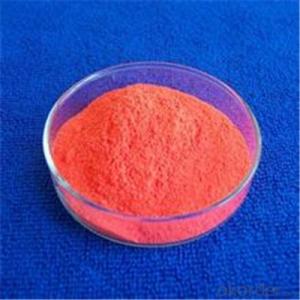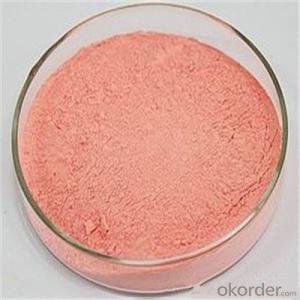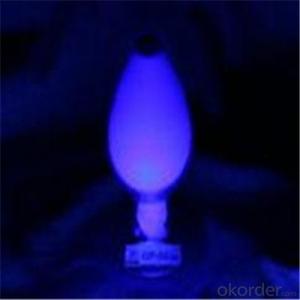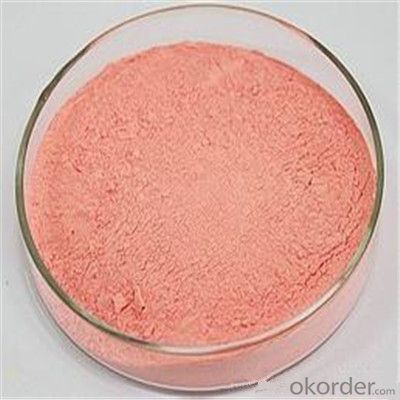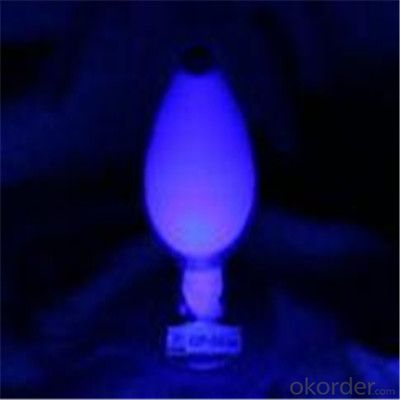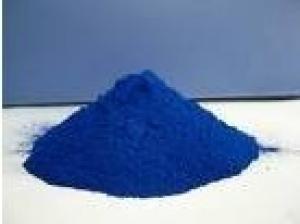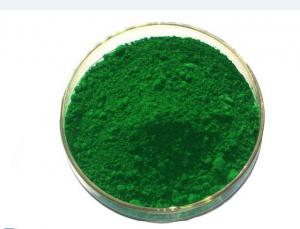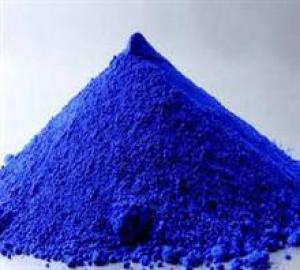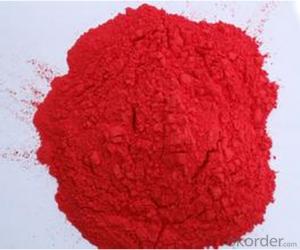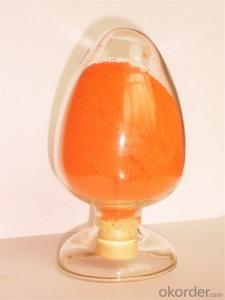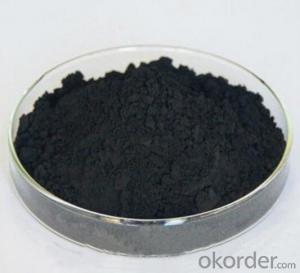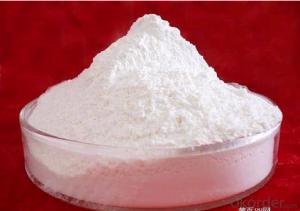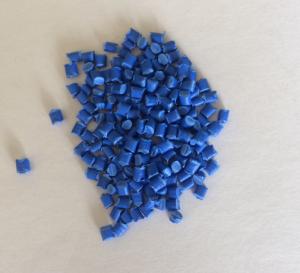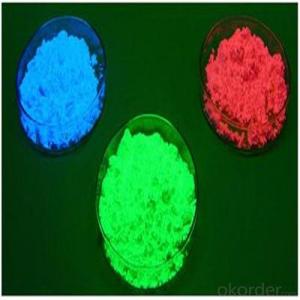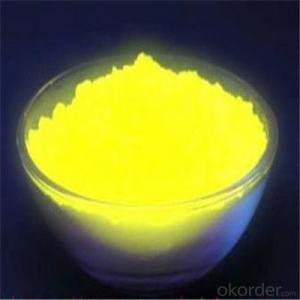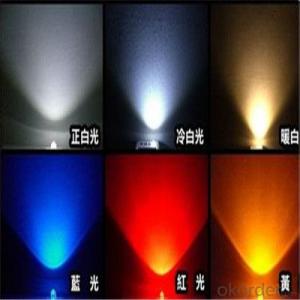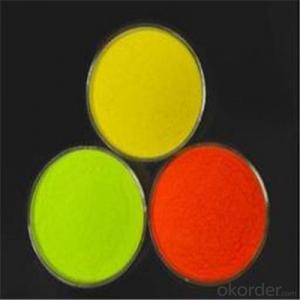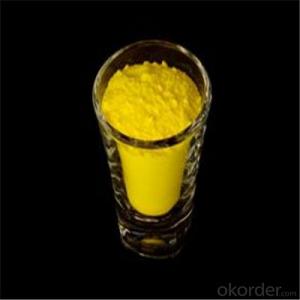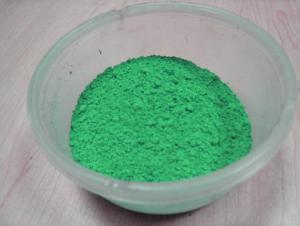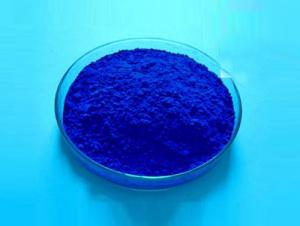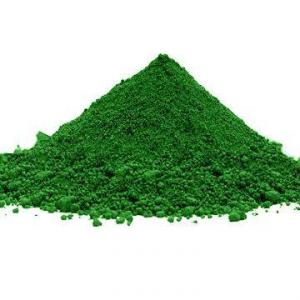LED Fluorescent Powder Red Color with High Quality
- Loading Port:
- Hai Kou
- Payment Terms:
- TT OR LC
- Min Order Qty:
- 99 kg
- Supply Capability:
- 100000 kg/month
OKorder Service Pledge
OKorder Financial Service
You Might Also Like
Description of LED Fluorescent:
1.In-house raw material supply
2.Scale production: 1600T/Year
3.Export volume No.1 in China
4.ERP: traceability
Festures of LED Fluorescent:
These red phosphors are designed for warm white illumination devices with high render color index.High brightness is achieveed using the shorter wavelength the blue chips ranging from 450nm to 460nm.They can be used in combination with other FL series products to get suitable color temperature and CRI according to customer's requirements.
Specifications of LED Fluorescent:
Emission band covering from 620nm to 660nm.High brightness white LEDs using these phosphors can be used for applications in display backlighting,cameraflashes,signage,decoration,LED displays,projectors,automotive,general lighting,and a variety of high power applications.
Images of LED Fluorescent:
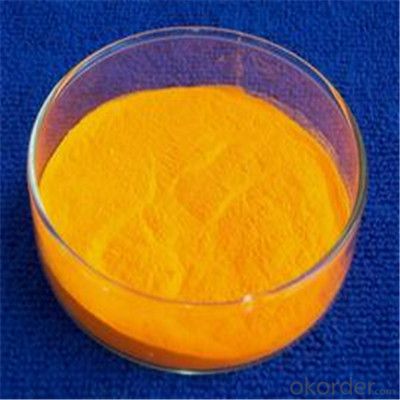
FAQ:
1.When can i get the price quotation?
We can send you the quotation within 24hours after your inquiry, including the shipping cost if you need.
2.What about payment term?
30% T/T deposit, balance against B/L copy.
Full T/T payment if quantity less than MOQ.
3. What’s your after-sales service?
One-year warranty, and 1% common accessories.
- Q: okay so I have always used all the cheap makeup and I am sick of it! I was wondering if mac pigments will give me a lot of color without having to use half of the container. Most eyeshadows look nothing like they are supposed to on me. they are like 100 times lighter. I have seen beautiful things done with the pigments but they look like they could get everywhere really easy. will they give me vibrant color without getting all over?
- You okorder Goodluck!
- Q: Is gel food coloring a pigment or a dye?
- Dyes contain pigments, my friend. What is a pigment? They are like little beads. Very very tiny beads of the same color. Then if you spread these out, they give the thing a color. For example, the little green beads in leaves give it a green color. Pigment in our hair gives it a blonde/auburn/brown/black color. What is a dye? A dye is a liquid made up of water and pigments. The pigments are dissolved in water (well not really dissolve just that you cant see the beads) so that it's easier for us to use it. Everything that has a color is made up of pigments. So, gel food coloring is a thicker version of a dye that contains pigments.
- Q: Explain why plants need a variety of pigments to carry out photosynthesis?
- flora must be conscious of distinctive wavelengths of light which each and each and each soak up terrific at a definite pigment. this would enable the main potential to be transfered to the plant with a vast spectrum of light.
- Q: If you could explain it to me I would be very happy!
- Accessory pigments are light-absorbing compounds, found in photosynthetic organisms, that work in conjuction with chlorophyll a. They include other forms of this pigment, such as chlorophyll b in green algal and higher plant antennae, while other algae may contain chlorophyll c or d. In addition, there are many non-chlorophyll accessory pigments, such as carotenoids or phycobiliproteins which also absorb light and transfer that light energy to photosystem chlorophylls. Some of these accessory pigments, particularly the carotenoids, also serve to absorb and dissipate excess light energy, or work as antioxidants.
- Q: What is a pigment and their function in photosynthesis?
- a pigment is any substance that absorbs light. chlorophyll, the green pigment common to all photosynthetic cells, absorbs all wavelengths of visible light except green, which it reflects to be detected by our eyes. black pigments absorb all of the wavelengths that strike them. white pigments/lighter colors reflect all or almost all of the energy striking them. pigments have their own characteristic absorption spectra, the absorption pattern of a given pigment. a photosynthetic pigment or chloroplast pigment is a pigment that is present in chloroplasts or photosynthetic bacteria. its function is to capture the light energy necessary for photosynthesis. :)
- Q: What does it mean when something is highly pigmented?
- Pigment is the concentration of color in a substance of matter. So when something is highly pigmented it means that the color is vibrant and rich :)
- Q: what the book says is that they 'harvest additional wavelengths.' i don't know what this means to how its an advantage.. can somone explain?
- Each photon has a particular wavelength, determined by the photon's energy. A pigment such as chlorophyll can only absorb photons in particular wavelength bands, matching the energies of available electron transitions to excited states. For chlorophyll, these bands are in blue and red -- the green color of most leaves is due to the waste light that is not absorbed by chlorophyll, while red and blue photons can be absorbed and used to power photosynthesis. An accessory pigment can absorb a photon that has a wavelength (color) outside of the bands that chlorophyll is able to absorb and can pass some of the absorbed energy on to chlorophyll, getting rid of the excess energy in another form, such as heat. A pigment might be tuned to absorb a photon of yellow light; the absorbed energy, stored in the excited state of an electron, is called an exciton (the photon becomes an exciton, so energy is not created or destroyed). The exciton can be passed to a chlorophyll, but only with the same energy as the red photon that the chlorophyll could normally absorb directly. The excess energy, the difference in energy between the yellow and red photon, must be dissipated in another form. This process allows a plant to harvest photons that would otherwise be unavailable to its photosystems. Consider how this would be an advantage to a plant living on a shaded forest floor, or to a planktonic cyanobacteria floating in the water below other photosynthetic algae, in regions where photosynthetically useful photons are scarce.
- Q: pigment: its color (to our eyes) what color of light it absorbsChl a Chl bCartenoidsany right answers would bbe greatly appreicated thanks soo muchhh
- pigment: .... reflected color to eyes .. what color of light it absorbs Chl a reflects green spectra between the blue and red absorption peaks. Some is absorbed at blue 450nm but most absorbed at red 680 - 700nm. Chl b reflects green spectra between the blue and red absorption peaks with a difference in which peak is stronger. Most is absorbed at blue 470 but also some at blue 430 and red 640 nm. Cartenoids reflect yellow, orange, or red and absorbs blue to blue-green light spectra. Xanthophyll absorbs well at 400-530 nm. Xanthophylls are a common sub class of the carotenoid pigment group. Beta-carotene absorbs most strongly between 400-500 nm.
- Q: Hi what is pigment?i went on mac cosmetics and they sell all different kinds of stuff called pigment. I want to use it to make lip gloss but is it safe for my lips?please answer soon!
- It's like loose eye shadow.. except a more vibrant colour.. you'll get more colour pay off (usually). Pigments are nice - if you're just starting off.. go with Vanilla Pigment, it's uses are endless! And yes, you can use it on your lips.. sometimes I even use blush on my lips with a nice lip gloss.
- Q: HW HELP THIS IS COMLPCATED
- They're right. Chlorophyll is the Only pigment in plant cells.
Send your message to us
LED Fluorescent Powder Red Color with High Quality
- Loading Port:
- Hai Kou
- Payment Terms:
- TT OR LC
- Min Order Qty:
- 99 kg
- Supply Capability:
- 100000 kg/month
OKorder Service Pledge
OKorder Financial Service
Similar products
Hot products
Hot Searches
Related keywords
